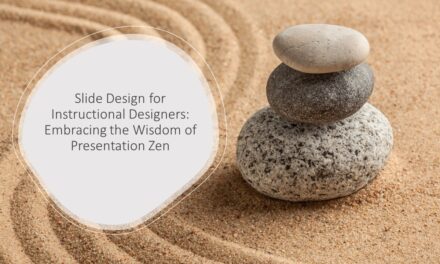
While ADDIE provides a comprehensive, linear pathway
Analyze, Design, Develop, Implement, Evaluate
It can sometimes lack the agility needed for rapid changes. Integrating agile methodologies introduces iterative cycles within each phase, enhancing responsiveness and adaptability.
While ADDIE provides a comprehensive, linear pathway
Analyze, Design, Develop, Implement, Evaluate
it can sometimes lack the agility needed for rapid changes. Integrating agile methodologies introduces iterative cycles within each phase, enhancing responsiveness and adaptability.
ADDIE vs. Agile: Key Differences
- Process Flow: ADDIE follows a linear process, moving step by step from analysis through evaluation. Agile, by contrast, adopts a cyclical approach—bringing each section to completion before looping back and developing the next segment.
- Iteration: Agile borrows elements from ADDIE but implements them in short, focused sprints (often two weeks), allowing for faster pivots and ongoing course improvements.
- Collaboration: In ADDIE, instructional designers typically collaborate with Subject Matter Experts (SMEs), project managers, and department heads to fully develop a course before learners see it. Agile makes collaboration broader and more dynamic—everyone involved, including designers, SMEs, clients, managers, stakeholders, and even learners, can contribute to changes throughout the process.
- Transparency & Feedback: Agile offers greater transparency due to frequent check-ins and evaluations at every stage. ADDIE often reserves evaluation for the end, which can delay visibility into what’s working (or not).
Making Each Phase Agile
- Analysis Phase:
Making it Agile: Conduct rapid needs assessments and validate findings through quick prototyping and stakeholder feedback, allowing for swift adjustments.
This approach ensures that the analysis remains aligned with evolving project requirements. - Design Phase:
Making it Agile: Develop preliminary design documents and create quick prototypes to test design concepts, refining them based on user input. This iterative process facilitates early detection of design issues and aligns the course structure with learner needs. - Development Phase:
Making it Agile: Build learning materials with iterative reviews and adjustments to ensure alignment with learning objectives. Incorporating continuous feedback during development enhances content relevance and effectiveness. - Implementation Phase:
Making it Agile: Deploy the training program and gather immediate feedback to make necessary real-time improvements. This strategy allows for prompt resolution of issues, ensuring a smoother learning experience. - Evaluation Phase:
Making it Agile: Assess the program’s effectiveness and use insights to inform subsequent iterations, enabling continuous improvement. An agile evaluation process supports ongoing enhancements and responsiveness to learner feedback.
Ready to make your training programs as dynamic as your favorite binge-worthy series? Let’s chat about integrating agile methodologies into your instructional design.
Also, here are two valuable resources:
When to Blend ADDIE and Agile Approaches
So, when does it make sense to weave together the structure of
- Complex or Large-Scale Projects: If you’re working on something hefty—think multinational rollouts or multi-module learning journeys—the up-front planning backbone offered by
ADDIE is invaluable. A thorough, strategic roadmap keeps everyone from drowning in chaos. But once you’re past that initial blueprint, usingAgile cycles to iterate each chunk helps you refine as you go, swiftly addressing issues without waiting for a project postmortem. - Tight Deadlines and Evolving Content: On the flip side, when deadlines are ambitious or content is still taking shape,
Agile shines. In these moments, rolling out early versions (prototypes) allows your team to gather feedback, test assumptions, and revise both content and course structure on the fly—all while inching closer to the project finish line. - Unclear or Shifting Requirements: If your stakeholders (or subject matter experts) have a habit of changing their minds,
Agile ’s adaptability becomes essential. You can adjust direction midstream, ensuring the final product remains relevant—no need to hit the brakes for a full-scale rebuild.
By combining these models, you’re no longer stuck choosing between a rigid blueprint and pure improvisation. You get the discipline to see the big picture with the nimbleness to adjust course when reality throws you a curveball.
Choosing Between ADDIE and Agile: Key Considerations
The decision to lean into
- Project Size and Scope: Larger, more complex projects may benefit from a thorough upfront planning phase that
ADDIE offers. Establishing clear objectives and roadmaps early can set a solid foundation, especially when multiple stakeholders are involved. - Timeline Pressures: If you’re facing a tight deadline or need to get a pilot version of your training into learners’ hands quickly,
Agile ‘s emphasis on rapid development and iterative releases has a clear advantage. This allows you to deliver a minimum viable product, collect feedback, and continuously improve without waiting for every detail to be perfect from the start. - Content Stability: When course materials or requirements are still evolving,
Agile shines by accommodating ongoing changes and late-breaking updates.ADDIE ‘s linear process, while methodical, can introduce delays if content revisions occur after planning or design steps. - Team Preferences and Workflow: Some teams thrive with detailed documentation and sequential stages, while others prefer collaborative sprints and regular check-ins. Consider your team’s working style and experience with each methodology before choosing a direction.
In many cases, the best approach isn’t strictly one or the other. By combining the structure of
Collaboration and Transparency: ADDIE vs. Agile
One of the key distinctions between
Transparency also takes on a new level of importance. Instead of waiting until the project’s final curtain call (as is often the case with traditional
This continual collaboration and open communication mean
Who’s at the Table: Comparing Involvement in ADDIE and Agile
In the

Book a Call with Our CEO
Lokesh has over 20 years of experience managing custom e-learning, L&D, design, and web development projects. Book a slot on his calendar to explore how we can help you.
Thank you for considering Check N Click as your partner. We are dedicated to delivering outstanding eLearning content, graphic design, web development, & LMS administration services tailored to your unique needs.



